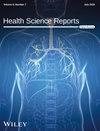Social Vulnerability Predictors of Acute Care: Leveraging Health Information Exchange Data to Understand Social Determinants at the Census Tract Level in a Correlational Study
Abstract
Background and Aims
While geographic social vulnerability is a known predictor of acute care utilization, it is not known which specific vulnerabilities are the best predictors. This is particularly important in rural areas where there are significant disparities. The purpose of this study was to identify social vulnerability predictors of acute care utilization across and within rural counties in Hawaiʻi.
Methods
This correlational study examined counts of emergency department (ED) visits and inpatient (IP) admissions for any reason by census tract obtained from Hawaiʻi Health Information Exchange for rural counties in Hawaiʻi. The overall Social Vulnerability Index (SVI), SVI subthemes, and individual measures that comprise the composites were used as measures of social vulnerability for each census tract. Regression models analyzed counts per population, after adjustments for missing data, where the response variable represents the number of events occurring. Each outcome (number of ED or IP visits) was regressed on a single predictor of social vulnerability for each county and for all counties combined.
Results
Across counties, the largest significant effect associated with acute care utilization was overall social vulnerability (ED: IRR = 5.72, 95% CI = 5.55–5.89; IP: IRR = 5.76, 95% CI = 5.42–6.12). The largest effect within Kauaʻi County was Racial and Ethnic Minority Status (ED: IRR = 5.38, 95% CI = 5.13–5.64; IP: IRR = 6.30, 95% CI = 5.64–7.03), within Maui County was Housing Type and Transportation (ED: IRR = 6.72, 95% CI = 6.37–7.1; IP: IRR = 4.46, 95% CI = 3.99–5), and within Hawaiʻi County was Household Characteristics for ED (IRR = 11.50, 95% CI = 10.91–12.12) and No High School Diploma for IP (IRR = 6.33, 95% CI = 5.79–6.93).
Conclusions
Social vulnerability is a significant predictor of acute care utilization across rural areas in Hawaiʻi. The strongest predictors were different for each county.


 求助内容:
求助内容: 应助结果提醒方式:
应助结果提醒方式:


